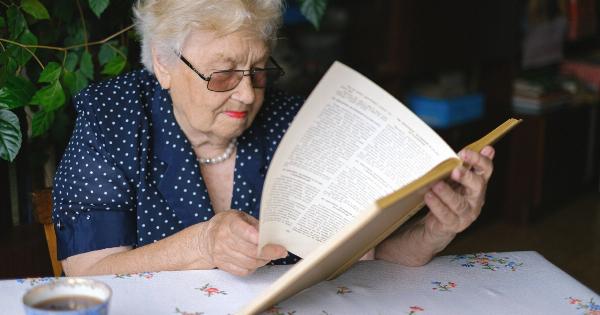As we age, one of the most noticeable changes in our appearance is the loss of hair color. Whether it’s the emergence of gray strands or a complete loss of pigment, the transformation can be concerning for many individuals.
But have you ever wondered why hair loses its color? In this article, we will explore the various factors that contribute to the loss of hair color and discuss the scientific explanations behind this natural phenomenon.
1. Melanin, the pigment behind hair color
Before delving into the reasons behind hair color loss, it’s essential to understand the role of melanin. Melanin is the pigment responsible for the color of our skin, eyes, and hair.
It is produced by specialized cells called melanocytes found in the hair follicles. There are two types of melanin: eumelanin, which gives hair its dark color, and pheomelanin, which contributes to blonde and red shades.
2. Aging and genetics
Genetic factors play a significant role in determining when and how hair loses its color. Some individuals start graying at a young age, while others may maintain their natural hair color well into their senior years.
The graying process is primarily linked to the genes we inherit from our parents. Several genes are associated with hair color, including the gene that regulates the production of melanin.
3. Decrease in melanin production
As we age, the melanocytes located in our hair follicles gradually decline in function. This decline leads to a decrease in melanin production, resulting in the loss of hair color.
The exact reasons behind this reduction in melanin production are not yet fully understood, but it is believed to be a combination of genetic and environmental factors. The gradual decline in melanin production can occur at different rates for each individual, leading to variations in the graying process.
4. Oxidative stress and free radicals
Oxidative stress and the accumulation of free radicals within the body have been linked to premature hair graying. Free radicals are unstable molecules that can cause damage to cells, including the melanocytes responsible for producing melanin.
Environmental factors such as smoking, exposure to pollutants, and excessive sun exposure can contribute to oxidative stress and the premature graying of hair.
5. Hair follicle damage
Damage to the hair follicles can also result in the loss of hair color. The hair shaft, which contains the pigment responsible for color, is produced by the hair follicle.
Any damage or trauma to the follicle can disrupt the production of melanin, leading to color loss. This damage can occur due to excessive heat styling, chemical treatments, or physical trauma to the scalp.
6. Autoimmune conditions and hair graying
Certain autoimmune conditions can also contribute to the loss of hair color. One such condition is alopecia areata, where the body’s immune system mistakenly attacks the hair follicles, resulting in hair loss.
In some cases, hair may regrow, but the new strands may lack pigment and appear gray or white.
7. Medical conditions and medications
Medical conditions and certain medications can lead to premature graying or even rapid hair color loss. Thyroid disorders, vitiligo, and vitamin deficiencies have been associated with changes in hair color.
Additionally, chemotherapy drugs, used in cancer treatment, often cause complete hair loss. When hair regrows after chemotherapy, it may initially appear different in color and texture.
8. Stress and hair color loss
Although it’s a common belief, there is limited scientific evidence to support the idea that stress directly causes hair color loss. However, studies have indicated a link between high levels of stress and an acceleration in the graying process.
Stress can also exacerbate other underlying factors, such as oxidative stress, that contribute to hair graying.
9. Lifestyle and hair color maintenance
While it may not directly cause hair color loss, certain lifestyle choices can affect the longevity of the hair’s natural color.
Excessive use of heat styling tools, such as flat irons and curling irons, can damage the hair shaft and lead to color fading. Similarly, harsh hair care products, including strong dyes and bleaches, can weaken the hair follicles and cause premature graying.
10. Embracing the natural changes
While the loss of hair color may be unsettling for some individuals, it’s important to remember that it is a natural part of the aging process. Embracing the natural changes and adapting to a new appearance can be empowering and liberating.
After all, the beauty of a person lies beyond the color of their hair, and embracing the wisdom that comes with age can be a rewarding experience.
Conclusion
As we age, the loss of hair color is inevitable for most individuals. Understanding the scientific explanations behind this process can help us appreciate and accept the changes to our appearance.
Factors such as genetics, decrease in melanin production, oxidative stress, hair follicle damage, autoimmune conditions, medical conditions, and lifestyle choices all play a role in hair color loss. While there is no definitive way to reverse or prevent the graying process, embracing the natural changes and focusing on overall hair health can help in maintaining a beautiful appearance at any age.





























